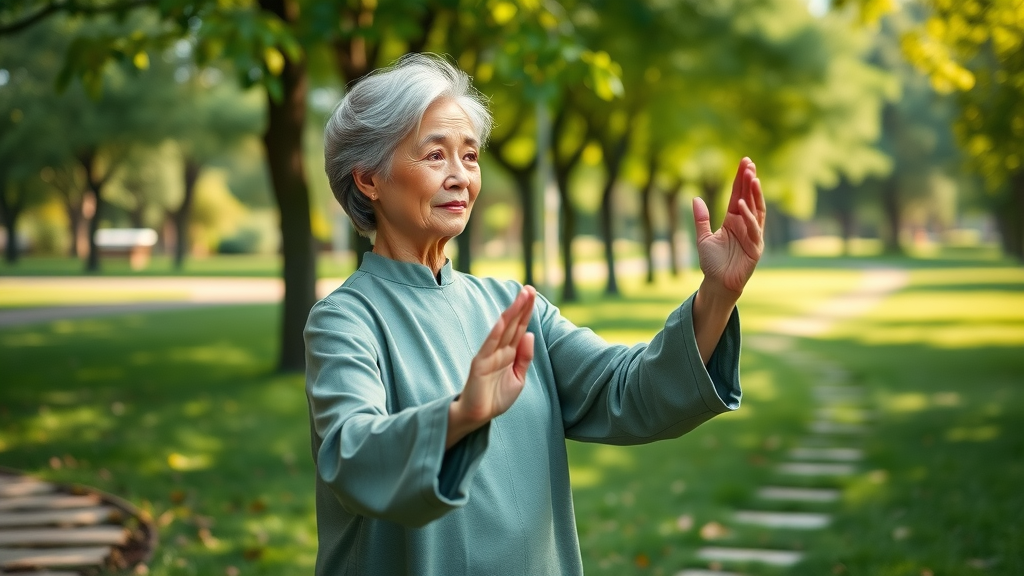Did you know that nearly 75% of people with rheumatoid arthritis are women, and less than half engage in the recommended amount of weekly exercise for joint health? This revealing statistic underscores the urgent need for practical, accessible exercises to manage rheumatoid arthritis pain—offering both hope and a roadmap to a better quality of life. If you’re feeling overwhelmed by joint pain or unsure where to begin, this guide is your compassionate, expert-backed companion.
A Surprising Statistic: Why Exercises to Manage Rheumatoid Arthritis Pain Matter
Living with rheumatoid arthritis (RA) often means facing unpredictable pain, stiffness, and swelling—conditions that can discourage even the most motivated beginners from pursuing an active lifestyle. Yet growing research by organizations like the Arthritis Foundation and the American College of Rheumatology confirms that regular, low-impact physical activity can reduce RA symptoms and improve function. In fact, women who participate in strength training, tai chi, and stretching exercises report less daily discomfort and greater independence.
But there’s more—a long-term study found that moderate activity just three times a week measurably decreased the risk of developing serious heart conditions (cardiovascular disease) commonly linked to RA. Understanding the risks and rewards of exercises to manage rheumatoid arthritis pain is especially crucial for women. This guide is designed to help you break through the confusion, address your unique concerns, and build sustainable routines that put you in control of your health.

What You’ll Learn in This Guide to Exercises to Manage Rheumatoid Arthritis Pain
- How to choose safe exercises for joint health
- Practical routines for strength training and flexibility
- Beginner tips for adopting exercises to manage rheumatoid arthritis pain
- Expert insights and motivational quotes
- Answers to frequent questions from women with rheumatoid arthritis
Understanding Rheumatoid Arthritis and Exercise: Key Facts for Women
What Happens to Joint Health with Rheumatoid Arthritis?
Rheumatoid arthritis is an autoimmune disease where the body's immune system mistakenly attacks healthy joint tissue, leading to chronic inflammation, loss of joint health, swelling, and pain. Over time, this ongoing inflammation breaks down cartilage and bone, causing joints to feel stiff and limiting range of motion. For many women, this progression can affect daily tasks and even diminish confidence.
However, clinical studies emphasize the importance of movement—even gentle, beginner-level activity like stretching or tai chi—to counteract joint deterioration. When you prioritize the right exercises to manage rheumatoid arthritis pain, you support cartilage integrity, enhance synovial fluid production, and help preserve overall physical function. Through purposeful exercise choices, it’s possible to maintain independence, manage symptoms, and prevent long-term disability.
The Connection Between Exercises to Manage Rheumatoid Arthritis Pain and Vascular Disease
A lesser-known risk for women with RA is an increased susceptibility to vascular disease—including heart attacks and strokes. Chronic inflammation from rheumatoid arthritis accelerates arterial plaque buildup, raising the likelihood of cardiovascular events. This makes regular physical activity not just supportive of joint health but also crucial for broader well-being.
When you follow an exercise guide that prioritizes low-impact cardiovascular training (like brisk walking or gentle swimming), you bolster your circulatory system. Scientific evidence indicates routines that combine aerobic fitness with strength training or resistance exercises can significantly lower both disease activity and vascular complications. In other words, purposeful movement isn’t just safe—it’s essential for reducing RA and cardiac risks.

How Cardiovascular Disease Risk Influences Exercise Choices
Because cardiovascular disease is more common for people with rheumatoid arthritis, especially women, it’s important to tailor exercise routines. High-intensity or high-impact exercise—like running or heavy weightlifting—can both exacerbate joint pain and strain the heart. Instead, most experts recommend focusing on aerobic exercise, resistance training, and flexibility work that is appropriate for your fitness level and prescribed frequency (often 2–4 times a week).
Consulting a medical professional or physical therapist before starting any new program ensures your chosen exercises protect your joint health and strengthen the cardiovascular system. Whether it’s incorporating resistance bands, cycling, or aquatic workouts, thoughtful activity selection truly reduces health risks while delivering a stronger, more resilient body.
How Exercises to Manage Rheumatoid Arthritis Pain Can Improve Daily Living
Benefits of Regular Strength Training and Resistance Training
Consistent strength training—even with light weights or resistance bands—has been shown to significantly improve muscle strength, physical function, and joint stability in women diagnosed with rheumatoid arthritis. By helping muscles support damaged joints, resistance exercises distribute stress more efficiently, reducing both current and future joint pain.
For beginners, the key lies in moderation and progression. Starting with simple movements (such as seated leg lifts, bicep curls with resistance bands, or wall push-ups) allows you to build strength without overloading inflamed joints. Women who embrace this balanced approach report reduced fatigue, less frequent swelling, and improvements in quality of life, contributing to both physical independence and emotional resilience.
Impact of Exercise on Managing Pain and Swelling
One of the most compelling benefits of targeted exercises to manage rheumatoid arthritis pain is their ability to reduce pain intensity and swelling. Physical activity stimulates the production of natural pain-relieving chemicals in the body, improves circulation, and enhances lymphatic drainage. This combination helps diminish chronic inflammation and the discomfort it brings.
Moreover, routines incorporating range of motion and stretching exercises help maintain flexibility and prevent the muscle shortening that often leads to stiffness. Movement also educates the nervous system to tolerate small amounts of activity, making day-to-day challenges—like carrying groceries or playing with grandchildren—more manageable for women with RA. Every small step counts toward greater freedom from pain and swelling.

How Often Should You Exercise? (Times a Week)
Experts recommend performing low-impact strength training, flexibility routines, and aerobic exercises at least two to three times a week to experience meaningful benefits in joint health and a reduction in rheumatoid arthritis symptoms. Consistency—rather than intensity—is essential for those just starting out. The American College of Rheumatology also emphasizes integrating physical activity into daily routines, such as brief walking breaks or gentle stretching.
While everyone’s ideal frequency may vary based on joint pain, swelling, and disease activity, a realistic goal for beginners is to dedicate 20 to 30 minutes per session, two or three times a week. Listen to your body and gradually increase as strength and confidence improve, always considering any medical advice from your healthcare provider.
Best Types of Exercises to Manage Rheumatoid Arthritis Pain (Backed by Research)
Low-Impact Exercise Recommendations for Joint Health
Selecting low-impact exercises is central to protecting joint health in women with rheumatoid arthritis. These activities minimize stress on vulnerable joints while still supporting muscular and cardiovascular health. Top recommendations include walking, aquatic exercise, cycling, and yoga. Each provides gentle but effective stimulation, improving range of motion and helping maintain daily function.
Swimming, in particular, offers unique advantages: the buoyancy of water supports inflamed joints, making movements less painful and more effective in building muscle strength. Guided yoga sequences tailored to people with RA encourage flexibility, balance, and relaxation without causing joint irritation. These types of exercise are proven to help manage symptoms and prevent disease progression.

Tai Chi as an Exercise Guide for Women
Tai chi is earning acclaim as an ideal exercise guide for women seeking gentle, effective ways to manage pain from rheumatoid arthritis. Rooted in ancient Chinese tradition, tai chi combines slow, flowing movements with deep breathing and mindfulness, delivering physical, mental, and even emotional benefits. Studies confirm that women practicing tai chi experience greater flexibility, balance, and reductions in both pain intensity and fatigue.
Today, many classes (including those led by certified physical therapists) offer modified tai chi routines for beginners. The rhythmic, weight-shifting movements lower the risk of falls, foster better circulation, and provide a low-impact alternative to traditional workouts. For women with RA, tai chi is an accessible and empowering path to better joint health and quality of life.
Why Strength Training and Resistance Training Matter
Incorporating strength training and resistance training into your exercise program is vital for slowing muscle loss and improving joint support. Using light dumbbells or resistance bands targets the core, arms, and legs, building stability and reducing excess pressure on fragile joints. This approach not only protects against further damage but also boosts confidence and independence.
Starting with two sets of eight to ten repetitions of each movement helps build muscle gradually—even for those with advanced symptoms. Over time, resistance training can translate into improved grip strength, better posture, easier mobility, and fewer falls. Always prioritize correct form and listen to your body to avoid strain or injury.
Stretching and Flexibility Exercises to Manage Rheumatoid Arthritis Pain
Stretching is a rarely celebrated but indispensable part of any RA-friendly routine. Daily stretches—such as overhead reaches, gentle trunk rotations, and toe touches—counteract the shortening effect of prolonged inflammation. Flexibility-based activities like guided yoga and Pilates enhance range of motion, reduce the risk of contractures, and alleviate stiffness.
For best results, start each session with dynamic warm-up stretches and finish with longer, static holds. These movements maintain healthy tissue, support overall joint health, and help reduce morning and evening flare-ups. Remember: stretching is not about chasing discomfort but about nurturing ease and recovery.
Beginner-Friendly Exercise Routine: Step-by-Step Guide
-
Step 1: Warm up for joint health
Begin with gentle, five-minute movements like arm circles, seated marching, or slow shoulder rolls to prepare joints for activity and reduce injury risk. -
Step 2: Gentle strength training moves
Use resistance bands for arm curls or perform wall push-ups. Focus on two sets of 8–10 repetitions, pausing if you experience pain.

-
Step 3: Low-impact cardiovascular activities
Try a brisk, 10-minute walk, use a recumbent bike, or walk in shallow pool water. These movements increase heart rate safely. -
Step 4: Tai chi and balance-focused movements
Practice three to five minutes of simple tai chi forms or single-leg balances with chair support if needed. -
Step 5: Cooling down with stretching
Finish each session by holding stretches—like hamstring or gentle triceps stretches—for 15–30 seconds to promote flexibility and recovery.
Follow along as a certified exercise instructor demonstrates a beginner-friendly routine for women with rheumatoid arthritis. This video covers warm-ups, gentle strength training, tai chi forms, and stretching exercises—perfect to build confidence and safety right from home.
Common Mistakes to Avoid When Starting Exercises to Manage Rheumatoid Arthritis Pain
- Avoiding high impact exercise that stresses joints: Skip running, jumping, or exercises that involve pounding or twisting. These can worsen joint pain and increase the risk of injury.
- Skipping warm-ups or stretching: Failing to properly warm up or stretch before and after exercise increases the risk of muscle strain and can trigger flare-ups in sensitive joints.
- Doing strength training too aggressively: Overloading weights, skipping rest days, or performing movements too quickly may result in injury or heightened pain. Gradual progression is key.

Quotes: Expert Advice on Exercises to Manage Rheumatoid Arthritis Pain
"Even gentle movements can help keep joints flexible and reduce pain. Consistency is key." — Dr. Smith, Rheumatologist
"Strength training improves daily living, especially for women who want to stay active despite rheumatoid arthritis."
People Also Ask: Essential Questions About Exercises to Manage Rheumatoid Arthritis Pain
What type of exercise is best for rheumatoid arthritis?
The most recommended types of exercise for rheumatoid arthritis are low-impact aerobic activities (like walking and swimming), strength training with light resistance, stretching, and gentle forms of yoga or tai chi. These support joint health, maintain range of motion, and build muscle strength, all while minimizing pain and risk of injury.
How to manage pain from rheumatoid arthritis?
Pain can be managed by combining regular, gentle exercise with prescribed medications, rest, and dietary adjustments. Stretching and strengthening routines help reduce pain and stiffness, while joint-friendly aerobic activities improve overall health. It’s essential to listen to your body, avoid overexertion, and consult your healthcare provider for medical advice personalized to your needs.
What exercises should you avoid with rheumatoid arthritis?
Avoid high-impact exercises such as running, jumping, or heavy weightlifting, as these can aggravate joint inflammation and lead to injury. Instead, opt for gentle forms of movement and always prioritize correct form. Exercises that involve sudden stops, heavy impact on knees or wrists, or quick directional changes should be avoided unless cleared by a medical professional.
What not to say to someone with rheumatoid arthritis?
Steer clear of dismissive remarks like “but you don’t look sick,” “it’s all in your head,” or “just try harder, you’ll feel better.” These undermine the real challenges faced by people with RA. Instead, offer understanding, ask how to help, and respect individual limits.
Table: Safe Exercises to Manage Rheumatoid Arthritis Pain vs. Ones to Avoid
| Exercise Type | Safe for RA | Key Benefits |
|---|---|---|
| Walking | Yes | Low-impact, improves cardiovascular health |
| Swimming | Yes | Supports joint health with minimal impact |
| Yoga | Yes | Enhances flexibility and strength |
| Running | No | High impact, stresses joints |
| Heavy weight training | No | Exacerbates joint pain |
Best Practices for Women: Building an Exercise Guide for Rheumatoid Arthritis Management
- Set realistic goals based on your ability
- Track your symptoms and progress
- Include joint-healthy low-impact exercise in your weekly routine
- Listen to your body and rest as needed; don’t push through intense pain
Learn from experts how to schedule exercise throughout your week for maximum joint protection and pain relief—without overdoing it.
FAQs: Exercises to Manage Rheumatoid Arthritis Pain
-
Are there any exercises for rheumatoid arthritis that can be done at home?
Yes! Walking in place, gentle stretches, tai chi, resistance band movements, and balance exercises are all accessible at home. A simple exercise program tailored to your needs can be both safe and effective. -
How can I tell if I'm doing an exercise wrong?
Signs include sharp or worsening joint pain, increased swelling, or loss of function. If you’re unsure, consult a physical therapist or use video resources for proper form. Always start slow and use gentle, controlled movements. -
Can exercise replace medication for rheumatoid arthritis?
No, exercise is a complement—not a replacement—for prescribed medication in RA management. Physical activity supports joint health and reduces symptoms, but ongoing medical advice and treatment remain essential. -
How quickly will I feel pain relief from exercise?
Many people start to notice improved range of motion and reduced pain within a few weeks of regular, appropriate exercise. Consistency matters—positive changes often build gradually and should always be tracked with your physician’s support.
Key Takeaways: Exercises to Manage Rheumatoid Arthritis Pain
- Gentle, consistent exercise is crucial for joint health in rheumatoid arthritis
- Strength training and tai chi are particularly effective
- Avoid high-impact exercise and listen to your body
Ready to Take Control? Visit our website at ThisPageOnHealth.com to learn more
Conclusion: Every woman can find relief and empowerment through beginner-friendly routines. With compassionate support and the right exercises, it’s possible to reclaim joint health and reclaim daily joy.
Sources
- https://www.arthritis.org/health-wellness/physical-activity/other-activities/exercise-and-arthritis
- https://www.rheumatology.org/practice-quality/clinical-support/clinical-practice-guidelines/physical-activity-and-exercise
- https://www.ncbi.nlm.nih.gov/pmc/articles/PMC3313435/
- https://www.cdc.gov/arthritis/basics/physical-activity-overview.html
- https://www.mayoclinic.org/diseases-conditions/rheumatoid-arthritis/in-depth/rheumatoid-arthritis-exercise/art-20044751
Incorporating regular exercise into your routine can significantly alleviate rheumatoid arthritis (RA) symptoms and enhance overall joint health. The Arthritis Foundation’s article, Best Exercises for Rheumatoid Arthritis, provides a comprehensive overview of effective exercises, including stretching, walking, yoga, and water aerobics, tailored to ease RA discomfort. Additionally, the Mayo Clinic’s resource, Rheumatoid arthritis: Is exercise important?, emphasizes the importance of regular physical activity in reducing joint pain and improving flexibility, offering practical advice on safe exercise practices for individuals with RA. By exploring these resources, you can gain valuable insights into developing an exercise regimen that supports your joint health and overall well-being.
 Add Row
Add Row  Add
Add 



Write A Comment